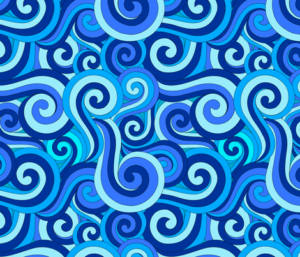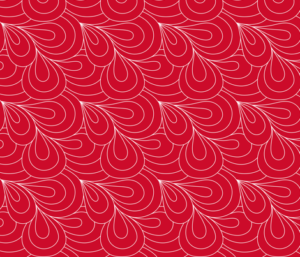Spoonflower Fat Quarter Sale
This is one of my most recent fabric designs based on my Swirling Water quilting design!
I’ve been dabbling with designing fabric for the past two years and I really love Spoonflower because I can upload a design today and have it printed and shipped to me immediately. Yes, it is more expensive than regular cotton fabric, but the ability to design, print, and ship immediately definitely has it’s benefits!
I’ve also designed fabric that’s intended to help you learn how to machine quilt. This Quilt Me! fabric has easy quilting designs printed right on the surface so you could quilt along the printed lines:
If you’ve never tried Spoonflower definitely give it a go during this fat quarter sale!
Let’s go quilt,
Leah Day



Yowsa!!! I have never paid more than $3.75 for a fat quarter. The thought of paying $12.00 for one (or even $6.00) kind of throws me for a loop. There are some incredibly beautiful fabrics there, though.
Like I said, it is a bit more expensive, but that is because it's print on demand – the fabric is only created when it's ordered.
Leah, the practice quilting fabric is brilliant! I love that idea!
If you look into the cost of high end fabric printers, and their inks and maintenance (heck, even low end printers) you realize what a value Spoonflower is!
Leah, at your recommendation I began investigating the Spoonflower Handbook and the other one concerning designing your own fabric. There is video on Spoonflower that shows the process. It sent me into a tailspin. Apparently you have start in Adobe Illustrator if you want tesselate your fabric. Is this what you do? Tempted as I am to design my own fabric, I don't want to purchase Adobe Illustrator or subscribe to the Creative Cloud.
Love your swirling water fabric. I can see that as hair, too!
Hi Gwyned! I hope this adventure has been fun! No, I don't use Adobe or the Creative Cloud because it takes up way too much space on my computers and makes everything slow down. I use Serif Draw Plus and it's a much simpler program, but can still do all the vector drawing and illustration that you need for designing fabric.
I usually work off a set template size – usually 8 inches – and create a handful of motifs to play with. Then I copy and paste 3 copies of that motif and space them 8 inches apart. I do that horizontally and vertically and keep building more motifs and spacing them out and once you're happy with the placement of them, you will have a regular repeating pattern. I then export just the 8 inch template at 150 dpi and upload it to Spoonflower and check the repeat and the look of the fabric.
If you wish to do larger panels, work full size with a 36 x 42 inch background so can upload the entire thing full size. I plan to do new colorways for older cheater cloth panels because I've learned a lot more about color just recently.
Overall it's just another fun place to create! I love the instant gratification of uploading and seeing the fabric take shape immediately. Enjoy!